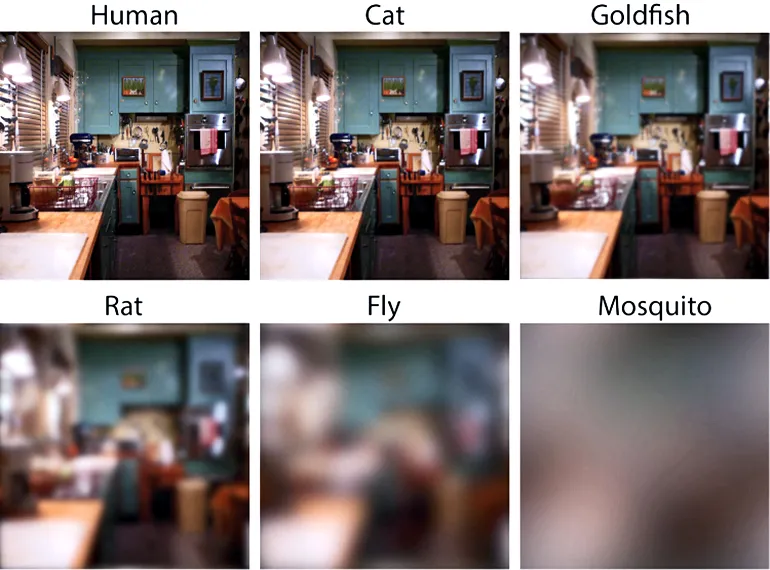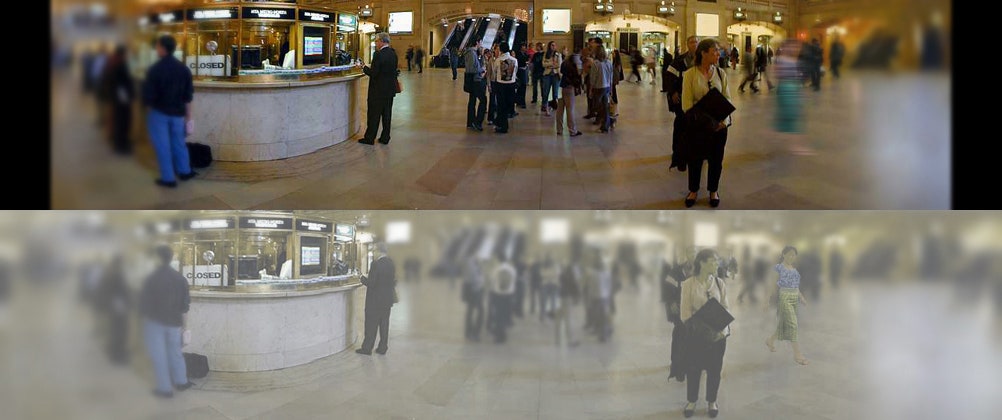Cats see the world differently due to their unique vision characteristics, including enhanced night vision and a limited color range. Understanding how cats perceive their surroundings is key to comprehending their behavior and needs.
In addition to having a larger field of view than humans, cats have a heightened ability to detect motion and perceive depth. Their eyes contain a high concentration of rod cells, enabling them to see well in low-light conditions. Furthermore, cats possess a reflective layer called the tapetum lucidum, which boosts their night vision.
Despite being unable to see as wide of a spectrum of colors as humans, they compensate for this with their exceptional night vision prowess. By understanding a cat’s visual perception, we can enhance their wellbeing and provide them with an enriching environment.
Understanding Cat Vision
Cats possess an extraordinary visual system that shapes their perception of the world. Their eyes are a remarkable evolutionary adaptation, allowing them to navigate their surroundings with precision. With exceptional visual acuity, cats can focus sharply on objects both near and far.
This sharpness, paired with their ability to see in dim light, enhances their hunting prowess. Furthermore, cats’ eyes are structured to provide them with binocular vision, which enables them to accurately judge distances. While cats may not see the same range of colors as humans, their vision includes the spectrum of blues and greens.
Understanding how cats see the world helps us appreciate their unique perspective and enhances our ability to interact with these fascinating creatures. So, let’s delve deeper into the amazing realm of cat vision and unravel its mysteries.
Nighttime Vision Of Cats
Cats possess a fascinating feature called the tapetum lucidum that enhances their night vision. This special reflective layer behind their retina enables them to see in low light conditions. It works by reflecting any available light back through the eyes, maximizing their ability to detect even the slightest motion in the dark.
This unique adaptation gives cats a superior advantage when hunting or navigating at night. Unlike humans, who struggle to see clearly in dim lighting, cats can effortlessly detect movements and objects in the dark, thanks to the tapetum lucidum. Understanding this secret behind their exceptional nighttime vision sheds light on the incredible abilities that cats possess to see the world in a way that is quite different from human perception.
The Unique Role Of Pupils In Cat Vision
Cats have a unique vision that is influenced by the shape of their pupils. The vertical-slit pupils play a crucial role in their depth perception, allowing them to accurately judge distances. Cats’ pupils also adjust to different lighting conditions, contracting in bright light and dilating in low light.
This adaptation helps them see clearly, whether it’s during the day or at night. Interestingly, the shape of the pupils can also differentiate between different cat species. For example, domestic cats typically have vertical-slit pupils, while big cats like lions and tigers have round pupils.
These variations in pupil shape highlight the fascinating intricacies of cat vision and how they perceive the world around them. From hunting to navigating their environment, cats rely on their unique pupil shape and adjustment abilities for their visual acuity.
Visual Patterns And Preferences Of Cats
Cats have an intriguing way of seeing the world, with their visual patterns and preferences revealing their unique perspective. Their love for movement and chasing is a testament to their eyes’ ability to track objects in motion. For instance, the infamous laser pointer captivates a feline’s attention, as they are naturally drawn to the swift and unpredictable nature of the red dot.
Through visual stimuli, cats experience mental stimulation, which enhances their overall well-being. Their keen eyesight allows them to spot tiny movements and focus on specific details, making their perception of the world different from our own. By understanding how cats see, we can create environments that cater to their visual needs, providing them with satisfying and stimulating experiences.
So next time you play with your feline friend, keep in mind their unique visual abilities and the wonders it brings to their world.
The Role Of Whiskers In Cat Vision
Whiskers play a crucial role in a cat’s vision, serving as vital sensory tools. These specialized hairs help cats understand and navigate their surroundings. By detecting changes in the environment, whiskers give cats a deeper understanding of their surroundings. They provide valuable information about the size, shape, and proximity of objects, measuring the space around them.
Additionally, whiskers aid in a cat’s hunting abilities, allowing them to accurately judge distances and pounce on prey with precision. Cats rely on their whiskers to explore their environment, particularly in low-light situations where their vision may be limited. Therefore, understanding the importance of whiskers in a cat’s visual perception is essential for appreciating their unique sensory abilities.
Adaptations To Long-Distance Vision
Cats have exceptional long-distance vision, enabling them to spot prey from afar. Their ability to see objects clearly at a distance is due to several factors. Unlike humans, feline vision is specialized for tracking and hunting, allowing them to focus on objects that are far away.
Their eyes have a unique structure that enhances their depth perception and enables them to detect movement from a distance. Cats also possess a high number of rod cells in their retinas, which are responsible for detecting light and motion, further enhancing their long-range vision.
This adaptation gives cats an advantage in hunting, allowing them to assess their surroundings and spot potential prey before it even comes within reach. Understanding how cats see the world can help us appreciate their remarkable visual capabilities.
Depth Perception In Cats
Cats perceive the world differently than humans. Depth perception plays a crucial role in their visual understanding. Stereopsis, the ability to merge separate images from each eye, helps cats judge distances accurately. However, felines face challenges in this area due to their unique eye structure.
Their eyes are positioned on the sides of their heads, which limits depth perception. To compensate, cats rely on other cues, such as motion parallax and size constancy, to gauge distances. For example, they observe the relative movement of objects as they move and use their experience to estimate distances.
Additionally, cats have specialized adaptations like slit-shaped pupils and excellent night vision that aid them in perceiving depth in low-light conditions. These fascinating abilities demonstrate how cats have evolved to navigate their surroundings with impressive accuracy. Understanding their depth perception enhances our knowledge of these enigmatic creatures.

Credit: www.smithsonianmag.com
The Influence Of Ultraviolet Light On Cat Vision
Cats possess a unique ability to perceive ultraviolet (UV) light, which greatly influences their vision. This UV sensitivity plays a significant role in their hunting and navigating skills in the environment. Unlike many other animals, cats are capable of seeing UV light, giving them an advantage when it comes to tracking prey and detecting subtle changes in their surroundings.
This ability allows cats to see details that are invisible to humans and most other animals. The world as they perceive it is not limited to the visible spectrum, but enhanced by their ability to see UV light. It is fascinating to learn how a cat’s vision differs from that of other animals, offering a fresh perspective on their perception of the world.
Understanding this unique aspect of cat vision can shed light on their behavior and interactions with their environment.
Exploring The World Of Cat Vision From Different Perspectives
Cat vision is a fascinating subject that scientists have studied extensively. Through comparative analysis with human vision, we have gained valuable insights into how cats perceive the world. Scientific studies have unraveled the mysteries surrounding feline vision, revealing unique characteristics and abilities.
Understanding how cats see enhances our relationship with them, allowing us to create environments that cater to their unique visual needs. By modifying our behavior and interactions, we can ensure that cats feel safe and comfortable in their surroundings. The ability to see in dim light, detect motion, and spot prey from a distance are all traits that make cats exceptional hunters.
Dive into the world of cat vision and discover the intriguing ways in which our feline companions perceive the world around them.
Frequently Asked Questions On How Do Cats See The World
How Do Cats See At Night?
Cats have an exceptional night vision due to their specialized retina and a higher number of rods than humans. The tapetum lucidum, a reflective layer behind their retina, enhances their ability to see in low light conditions. This allows them to navigate and hunt effectively in the dark.
Do Cats See Colors?
Yes, cats can see colors, but not as vividly as humans. They have fewer color receptors in their eyes compared to humans, making their color perception somewhat limited. Cats are better at distinguishing between shades of blue and green rather than red and orange.
Can Cats See In Complete Darkness?
While cats have excellent night vision, they cannot see in complete darkness. They still require a minimal amount of light to see. Their eyes are designed to gather even the smallest amount of available light, allowing them to see in dimly lit environments, but total darkness poses a challenge for them.
Conclusion
Cats have an extraordinary vision that allows them to see the world in a unique way. With their incredible night vision, their ability to detect motion, and their specialized eye structure, cats are well-equipped for survival and hunting. Understanding how cats see the world can provide us with a deeper appreciation for their behavior and interactions with their environment.
Cats possess a higher number of rod cells in their eyes compared to humans, allowing them to see in low light conditions. Their night vision is enhanced by a reflective layer behind their retinas called the tapetum lucidum, which bounces light back through the eyes, boosting their sensitivity.
This allows cats to effortlessly navigate in darkness, making them formidable predators. Additionally, cats have an uncanny ability to detect motion. Their eyes are designed to focus on moving objects, thanks to the presence of a higher number of ganglion cells in the retina.
This, combined with their sharp vision, makes them exceptional hunters. Cats’ vision is a remarkable adaptation that enables them to see the world in a way that is vastly different from our own. Their incredible night vision and motion detection skills allow them to explore their surroundings effortlessly.
By understanding how cats see, we can better understand and appreciate these fascinating creatures.



